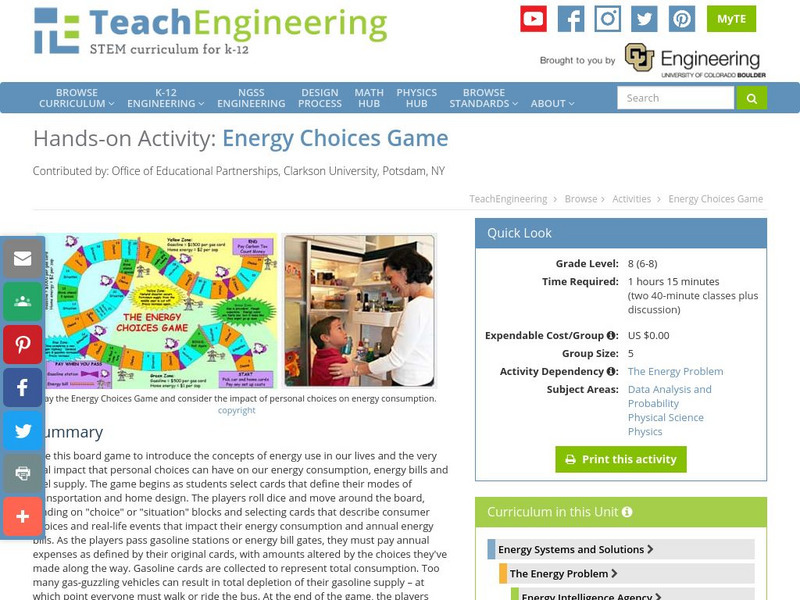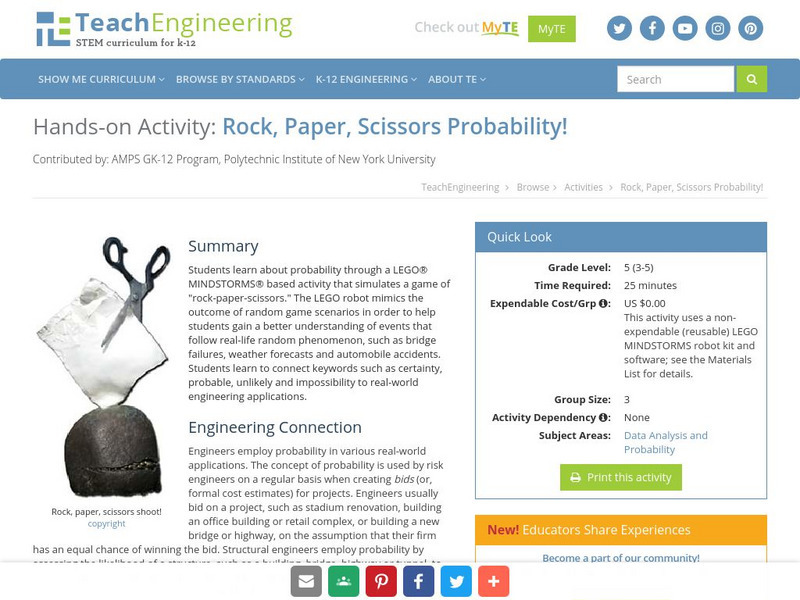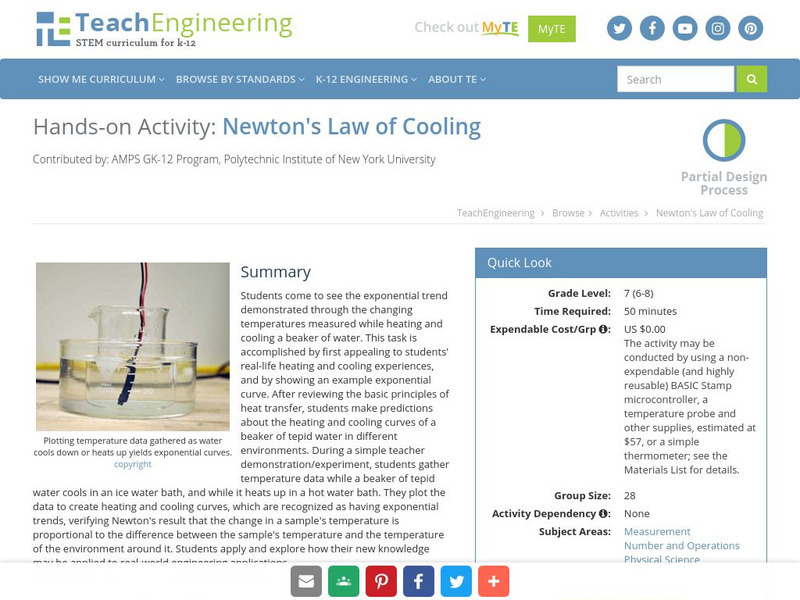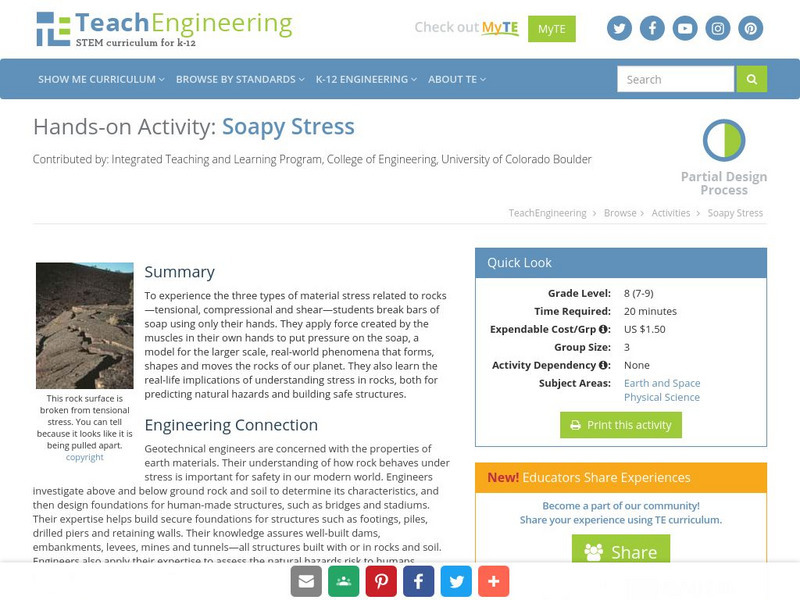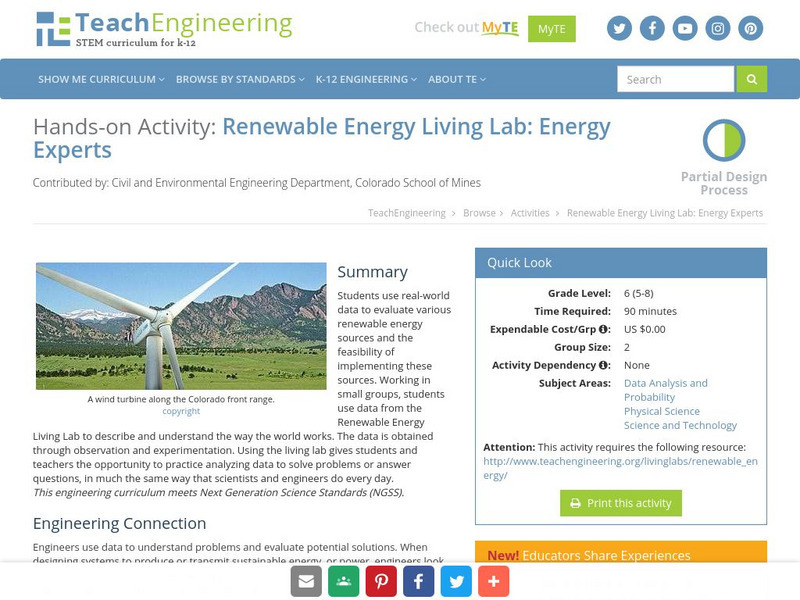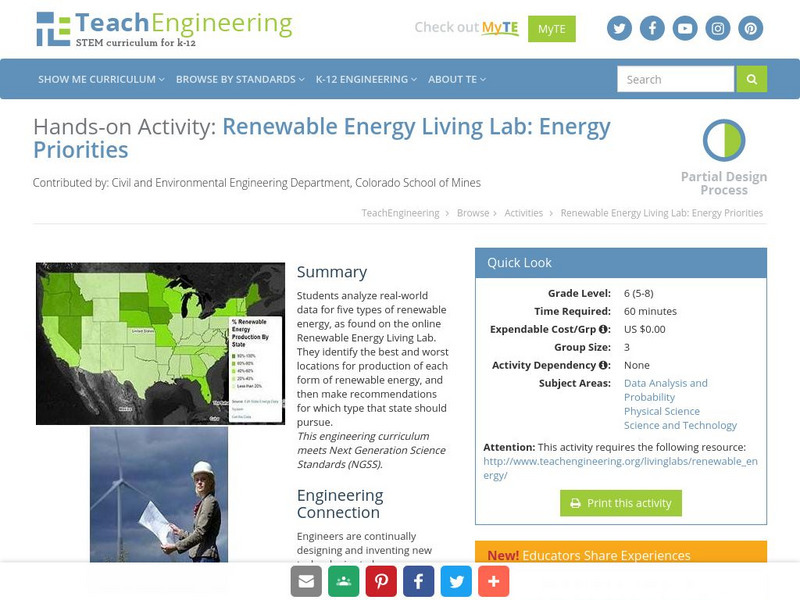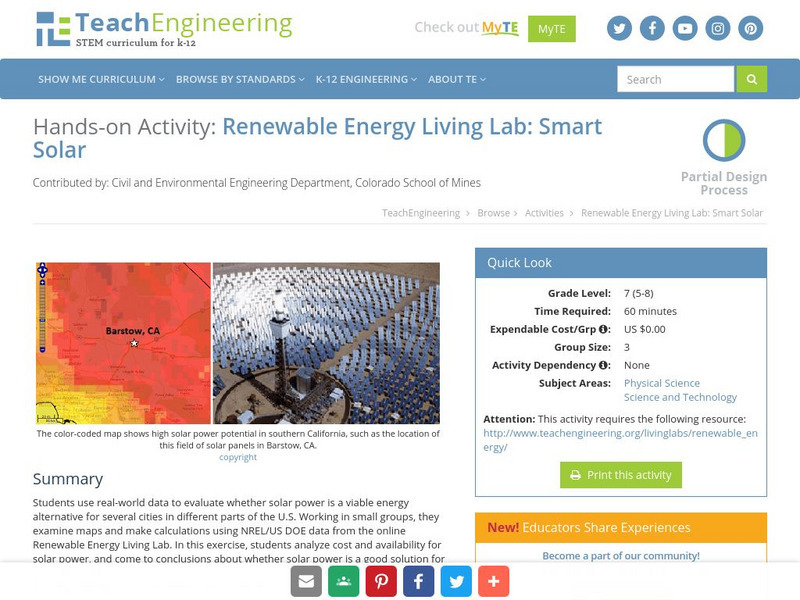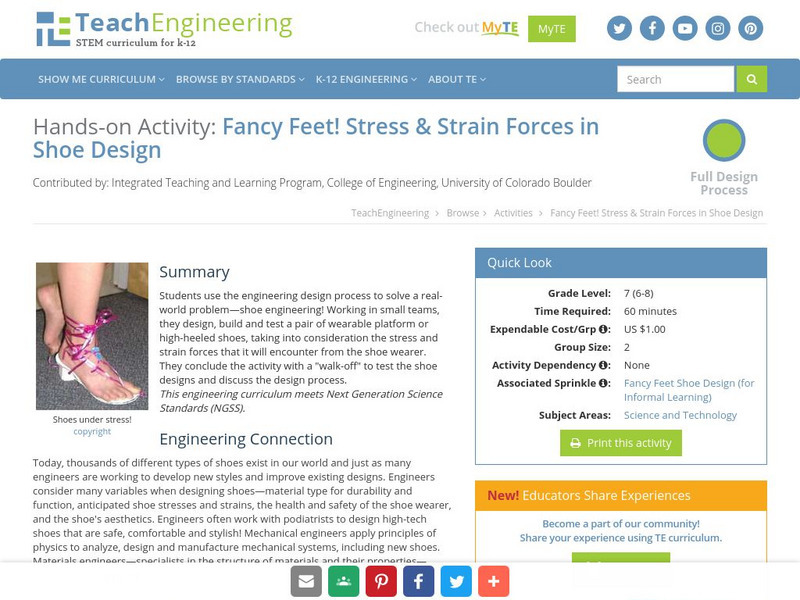Interactive Mathematics
Interactive Mathematics: Even Crash Test Dummies Use Calculus
Using the average value of a function, the severity of injury in crashes can be determined with integral calculus. The mini lessons reveal data that shows why it's in your best interest to wear a seat belt.
University of Regina (Canada)
University of Regina: Math Central: m.c.escher: Mathematics and Visual Arts
This cross-curricular middle school unit integrates mathematics and visual art. Through the study of the M.C. Escher?s work, learners explore tiling from both a mathematical and artistic point of view. Points for discussion and...
Mathematics Archives
Math Archives: Visual Calculus: Antiderivatives/average Value of a Function
This site has the definition of average of a function by using integrals. The site also contains the proof of the mean value theorem which may be viewed one step at a time. There are links to related exercises whose answer is shown one...
Other
Learning Skills for Information, Communication and Media Literacy: Math [Pdf]
The Partnership defines ICT Literacy as the use of 21st-century tools to perform learning skills. Learning Skill + 21st Century Skill = ICT Literacy. The Math Map here enables educators, administrators, and policymakers to gain concrete...
Other
The Futures Channel: Problem Solving
"Connecting learning to the real world" is the goal of the Futures Channel. Through the use of short videos, teachers can integrate real-world examples of how math and science are used in everyday life. Complete teaching guidelines...
Other
A River Runs Through It Learning Project
In this year long learning project integrating mathematics and science, students solve environmental problems using data collection and problem solving concepts. Designed for upper elementary gifted students. Interactive components and...
Other
Aesop's Fables: Online Collection
In addition to providing full texts of over 600 fables by various authors, this website is a complete source for biographical, historical, and critical information. Many fables include Real Audio narrations so you can listen while you...
TeachEngineering
Teach Engineering: Energy Choices Game
Use this board game to introduce the concepts of energy use in our lives and the very real impact that personal choices can have on our energy consumption, energy bills and fuel supply. The game begins as students select cards that...
TeachEngineering
Teach Engineering: Rock, Paper, Scissors Probability!
Students learn about probability through a LEGO MINDSTORMS NTX-based activity that simulates a game of "rock-paper-scissors." The LEGO robot mimics the outcome of random game scenarios in order to help students gain a better...
TeachEngineering
Teach Engineering: Graphing the Spread of Disease
Students simulate disease transmission by collecting data based on their proximity to other students. One option for measuring proximity is by having Bluetooth devices "discover" each other. After data is collected, students apply graph...
TeachEngineering
Teach Engineering: Newton's Law of Cooling
Students come to see the exponential trend demonstrated through the changing temperatures measured while heating and cooling a beaker of water. This task is accomplished by first appealing to students' real-life heating and cooling...
TeachEngineering
Teach Engineering: Soapy Stress
To experience the three types of material stress related to rocks - tensional, compressional and shear - students break bars of soap using only their hands. They apply force created by the muscles in their own hands to put pressure on...
TeachEngineering
Teach Engineering: Ranking the Rocks
Student teams assign importance factors, called "desirability points," the rock properties found in the previous lesson/activity in order to mathematically determine the overall best rocks for building caverns within. They learn the...
TeachEngineering
Teach Engineering: Renewable Energy Living Lab: The Bright Idea
Students use real-world data to evaluate the feasibility of solar energy and other renewable energy sources in different U.S. locations. Working in small groups, students act as engineers evaluating the suitability of installing solar...
TeachEngineering
Teach Engineering: Renewable Energy Living Lab: Energy Experts
Students use real-world data to evaluate various renewable energy sources and the feasibility of implementing these sources. Working in small groups, students use data from the Renewable Energy Living Lab to describe and understand the...
TeachEngineering
Teach Engineering: Renewable Energy Living Lab: Energy Priorities
Students analyze real-world data for five types of renewable energy, as found on the online Renewable Energy Living Lab. They identify the best and worst locations for production of each form of renewable energy, and then make...
TeachEngineering
Teach Engineering: Renewable Energy Living Lab: Power Your School
Students use real-world data to calculate the potential for solar and wind energy generation at their school location. After examining maps and analyzing data from the online Renewable Energy Living Lab, they write recommendations as to...
TeachEngineering
Teach Engineering: Renewable Energy Living Lab
Students become familiar with the online Renewable Energy Living Lab interface and access its real-world solar energy data to evaluate the potential for solar generation in various U.S. locations. They become familiar with where the most...
TeachEngineering
Teach Engineering: Renewable Energy Living Lab: Smart Solar
Students use real-world data to evaluate whether solar power is a viable energy alternative for several cities in different parts of the U.S. Working in small groups, they examine maps and make calculations using NREL/US DOE data from...
TeachEngineering
Teach Engineering: Saltwater Circuit
Students build a saltwater circuit, which is an electrical circuit that uses saltwater as part of the circuit. Students investigate the conductivity of saltwater, and develop an understanding of how the amount of salt in a solution...
TeachEngineering
Teach Engineering: Fancy Feet
Students use the engineering design process to solve a real-world problem - shoe engineering! Working in small teams, students design, build and test a pair of wearable platform or high-heeled shoes, taking into consideration the stress...
TeachEngineering
Teach Engineering: Floodplain Modeling
Students explore the impact of changing river volumes and different floodplain terrain in experimental trials with table top-sized riverbed models. The models are made using modeling clay in aluminum baking pans placed on a slight...
TeachEngineering
Teach Engineering: Tunnel Through!
Students apply their knowledge about mountains and rocks to transportation engineering, with the task of developing a model mountain tunnel that simulates the principles behind real-life engineering design. Student teams design and...
TeachEngineering
Teach Engineering: Am I on the Radio?
During this activity, students create a working radio by soldering circuit components supplied from an AM radio kit. Since this activity is carried out in conjunction with the associated lessons concerning circuits and how an AM radio...



![Learning Skills for Information, Communication and Media Literacy: Math [Pdf] Professional Doc Learning Skills for Information, Communication and Media Literacy: Math [Pdf] Professional Doc](https://static.lp.lexp.cloud/images/attachment_defaults/resource/large/FPO-knovation.png)


